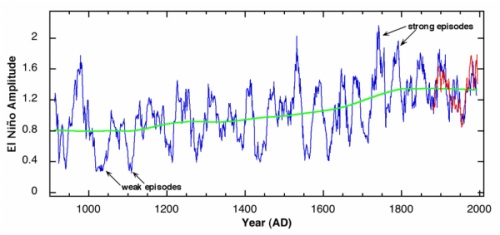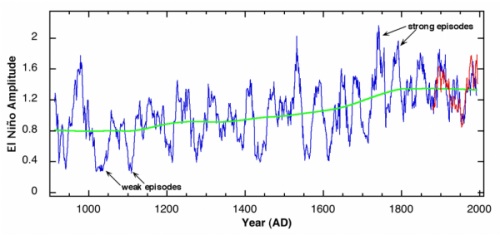
Right on the heels of America's spring of extreme weather, scientists at the Columbia Earth Institute have unveiled a package of historical data that shows greater variation in weather when the Earth is warmer. The 1,100 years of data, derived from tree rings, show that the difference between El Nino and La Nina — large, multi-year climate phenomena that often lead to extreme weather — is greater when the planet is warmer.
Historically, the intensity of El Nino and La Nina has waxed and waned in 50- to 90-year cycles. The most intense peaks — when the Pacific ocean is warmest, for El Nino, or coldest, for La Nina — correlate with warmer climates overall. If you want to oversimplify, the physics here is pretty straightforward: More heat in the system means more energy, and that leads to bigger swings and more violent weather.



